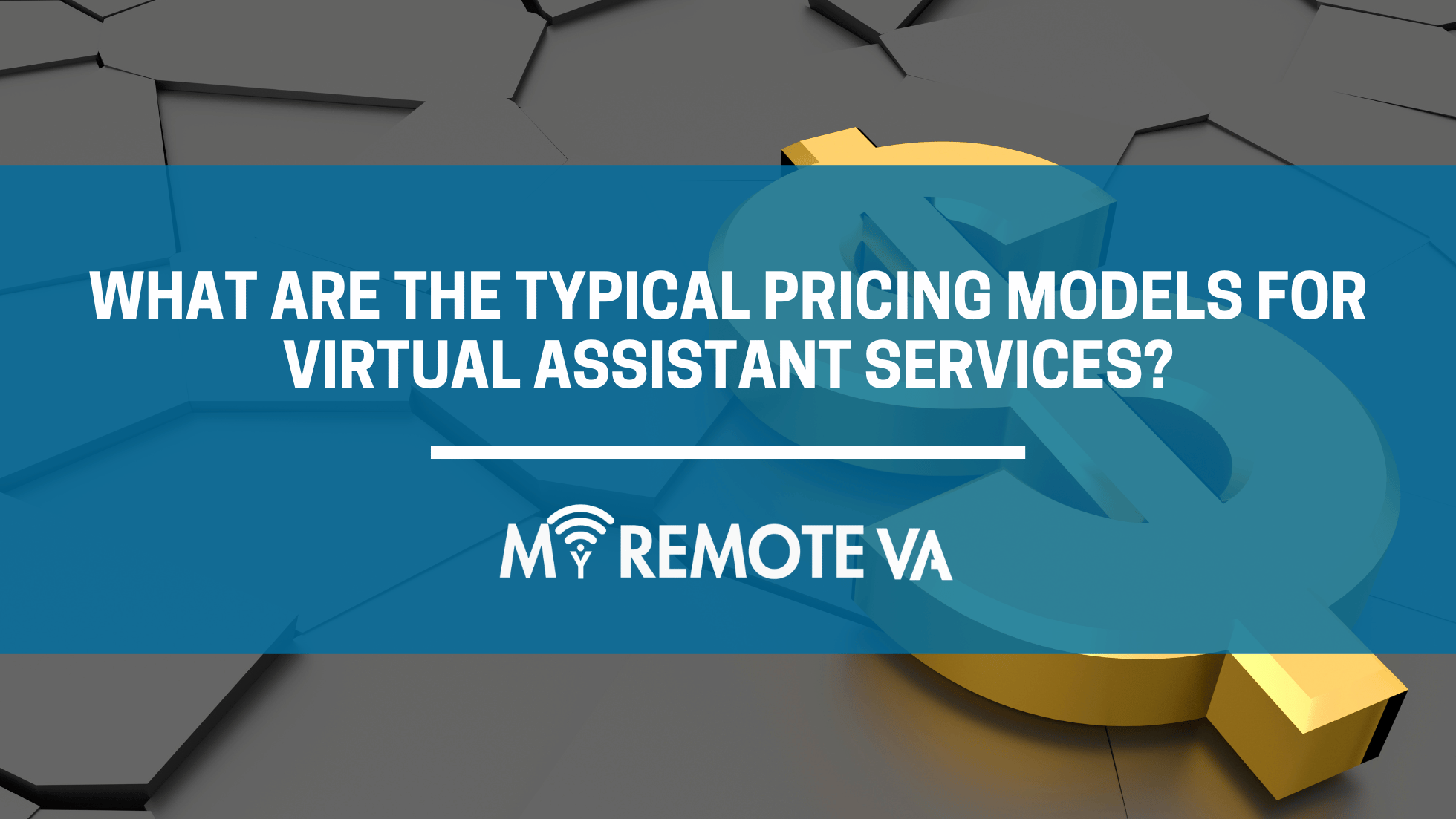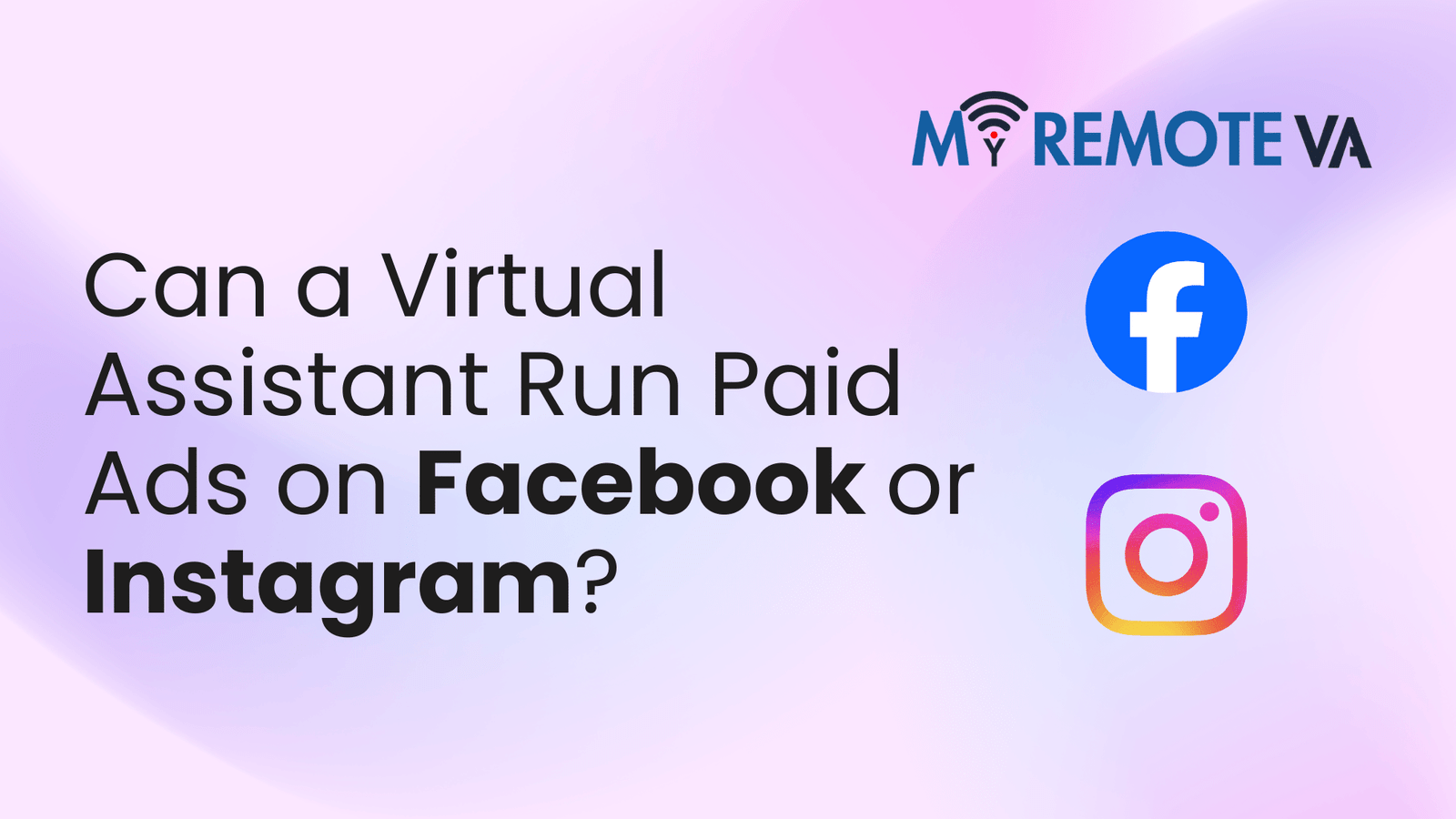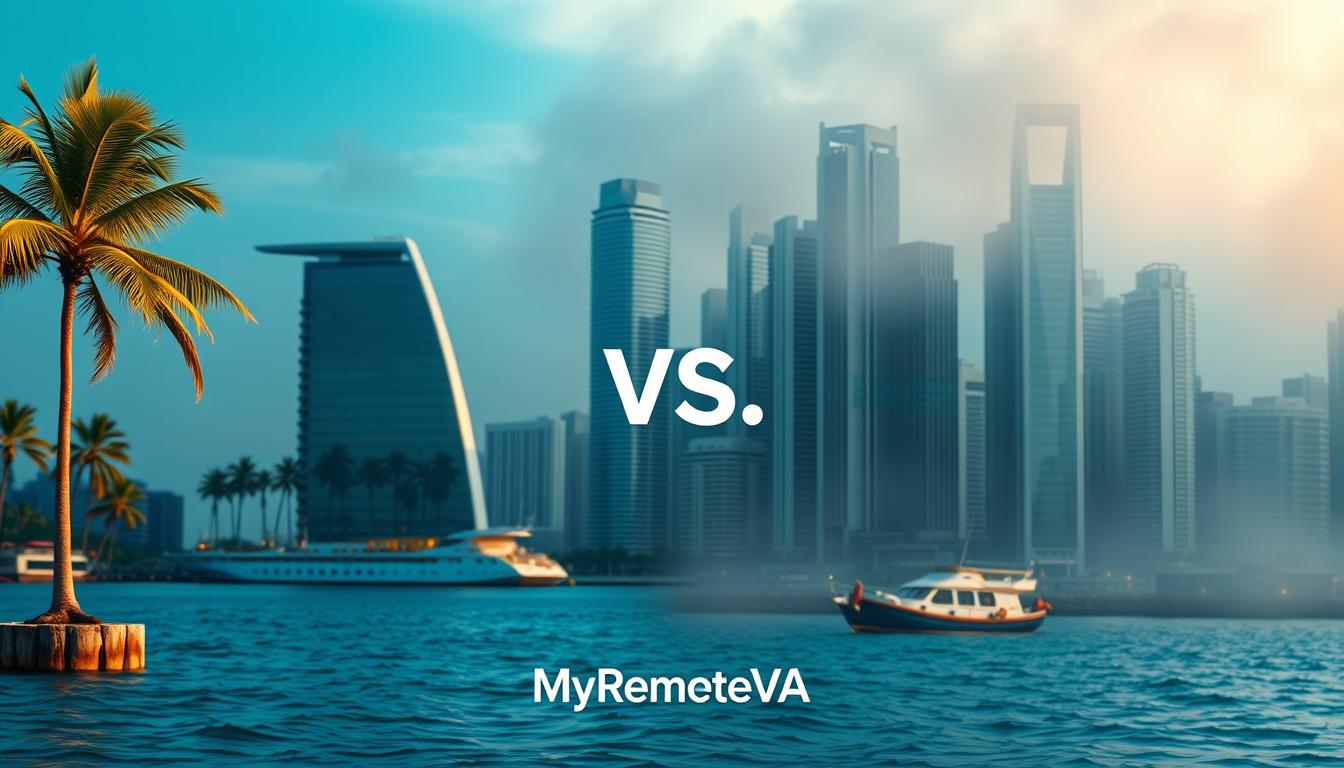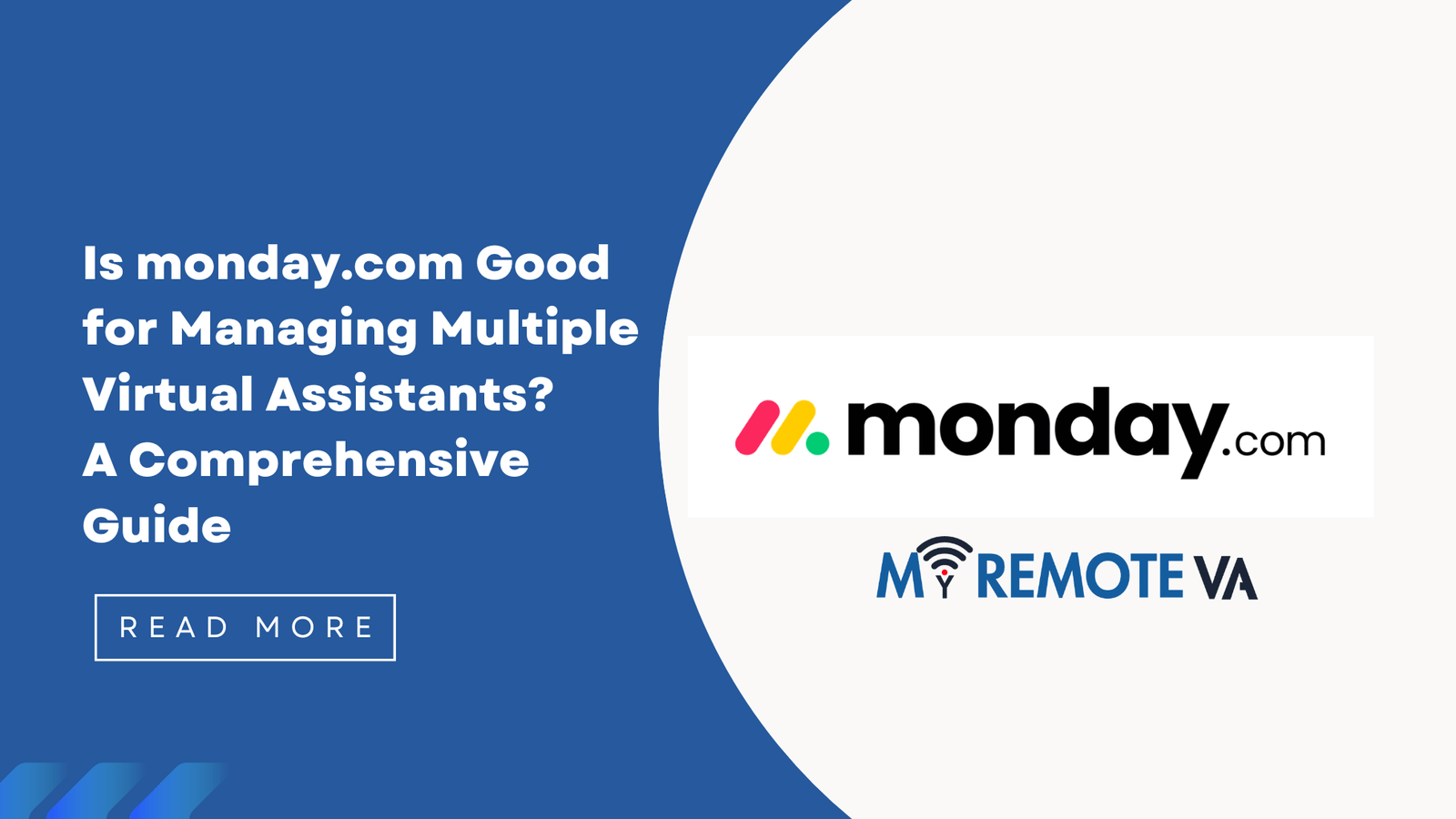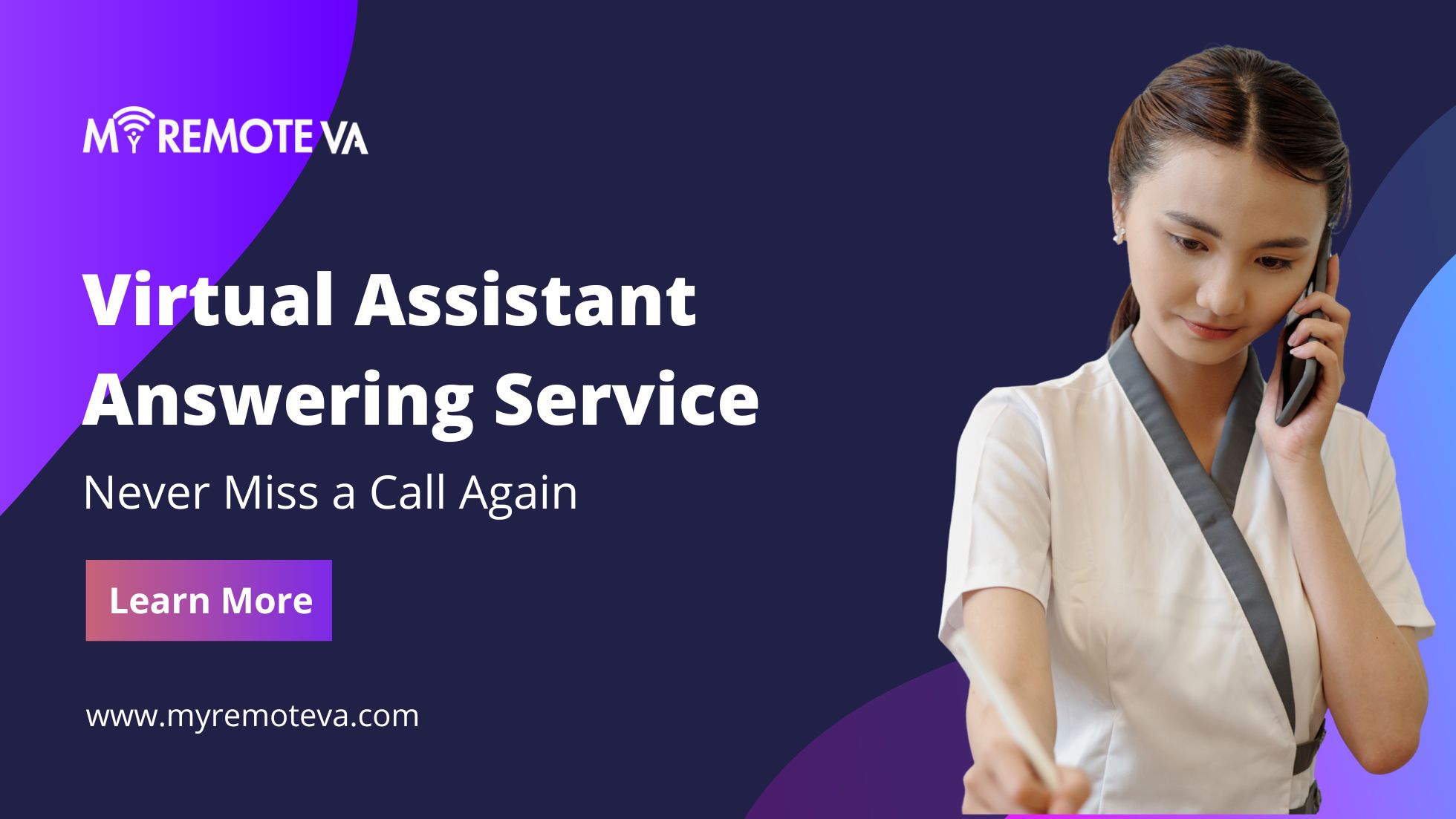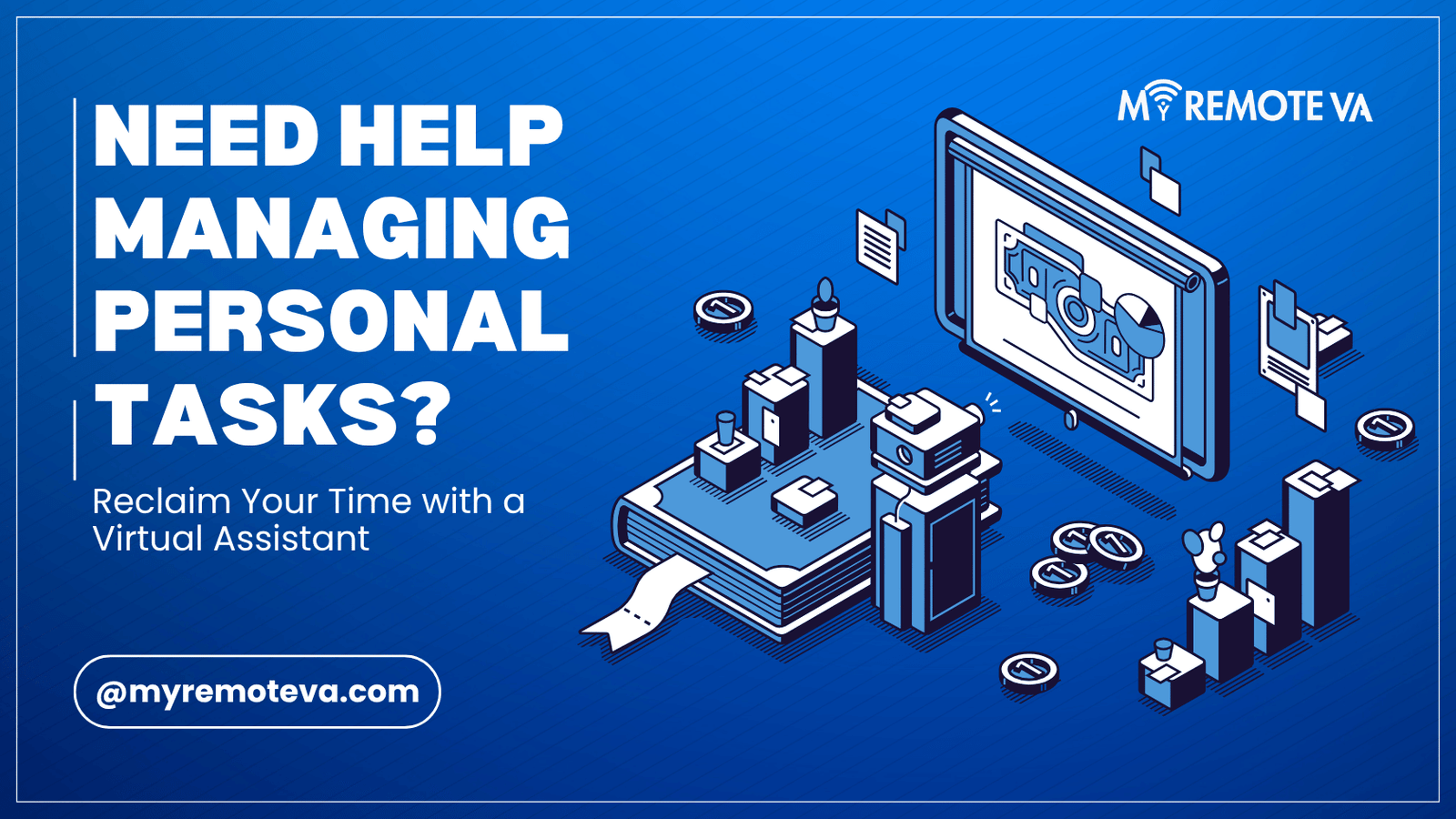What are the Typical Pricing Models for Virtual Assistant Services?
Virtual assistant (VA) services offer various pricing models to cater to different needs and budgets. Understanding these models is crucial for selecting the best option for your specific requirements. Here’s a breakdown of the most common pricing structures:
- What are the Typical Pricing Models for Virtual Assistant Services?
- 1. Hourly Rate
- 2. Monthly Retainer
- 3. Project-Based Pricing
- 4. Value-Based Pricing
- FAQ Section: Virtual Assistant Pricing Models
- What factors influence the pricing of virtual assistant services?
- How do I determine which pricing model is right for me?
- Are there any hidden costs associated with virtual assistant services?
- What questions should I ask a potential VA about their pricing?
- How can I ensure I'm getting a fair price for virtual assistant services?
Hourly Rate
This is one of the most prevalent models. You pay the VA for each hour they work. Hourly rates can vary significantly depending on the VA’s experience, skillset, location, and the complexity of the tasks. Some VAs may have a minimum hourly commitment. This model is suitable for businesses with fluctuating workloads or project-based tasks.
Monthly Retainer
With a monthly retainer, you pay a fixed fee for a predetermined number of hours per month. This provides a consistent level of support and can be more cost-effective than hourly rates if you have consistent needs. Retainers often come with pre-agreed-upon terms regarding unused hours – some roll over to the next month, while others are forfeited.
Project-Based Pricing
For specific projects with clearly defined deliverables, VAs may offer a fixed price. This is ideal for tasks like website design, content creation, or social media campaign setup. This model provides cost predictability and eliminates the need to track hourly usage. The VA estimates the total time required and quotes a fixed fee for completing the project.
Task-Based Pricing
Similar to project-based pricing, task-based pricing involves paying a fixed fee for completing specific tasks. The difference lies in the scope. While project-based pricing covers a larger undertaking, task-based pricing applies to smaller, more granular activities. For example, a VA might charge a fixed fee per blog post or per email marketing campaign.
Dedicated Plans
Certain virtual assistant services offer dedicated plans, where you have a full-time or part-time VA exclusively dedicated to your work. Pricing is usually structured around a fixed monthly fee for a specific number of hours per week (e.g., 40 hours or 80 hours) depending on the service agreement. This model is suitable for those requiring substantial and consistent support.
When choosing a pricing model, carefully consider your workload, budget, and the complexity of the tasks you need to delegate. Evaluate which model offers the best value and aligns with your long-term goals. Startups, founders, agencies, and busy professionals can benefit from virtual assistant support for tasks like admin, tech, customer support, marketing, creative tasks, or executive work.
1. Hourly Rate
The hourly rate model is one of the most common and straightforward pricing structures for virtual assistant services. You pay for the actual time the VA spends working on your tasks. This model is particularly well-suited for clients with fluctuating workloads or those who need assistance with specific, short-term projects.
How it Works:
Virtual assistants track their time meticulously, often using specialized software, and invoice you based on the agreed-upon hourly rate. Rates can vary widely depending on several factors, including:
- VA’s Skillset and Experience: More specialized skills (e.g., web development, advanced marketing analytics) typically command higher hourly rates than general administrative tasks.
- Location: VAs based in countries with lower costs of living may offer lower rates.
- Complexity of Tasks: Intricate projects or those requiring advanced software proficiency may be priced higher.
Considerations:
While seemingly simple, there are a few things to keep in mind when considering an hourly rate model:
- Time Tracking Accuracy: It’s crucial to ensure the VA has a reliable time tracking system.
- Project Scope Definition: Clear communication and defined project scopes are vital to avoid unexpected costs.
- Budget Management: Clients need to actively manage the VA’s time to stay within budget. Unexpected delays on VA’s end might require a conversation or renegotiation.
Some companies offer curated Hourly Monthly Plans with different amounts of hours to be used during that month.
2. Monthly Retainer
A monthly retainer pricing model involves paying a virtual assistant a fixed fee each month in exchange for a pre-determined number of hours or tasks. This model is popular for ongoing and consistent virtual assistant needs. It provides predictability in budgeting and ensures that the VA dedicates a specific amount of time to your projects regularly.
Benefits of a Monthly Retainer:
- Predictable Budgeting: Know exactly how much you’ll be spending on virtual assistant services each month.
- Dedicated Time: The VA reserves a set amount of time specifically for your tasks.
- Prioritized Attention: Retainer clients often receive prioritized attention and faster turnaround times.
- Long-Term Relationship: Fosters a stronger working relationship and better understanding of your needs over time.
Considerations for Monthly Retainers:
- Scope Definition: Clearly define the scope of work and the number of hours included in the retainer to avoid misunderstandings.
- Unused Hours: Inquire about the policy regarding unused hours. Some VAs allow rollover, while others do not.
- Flexibility: Understand the flexibility of the retainer. Can the hours be adjusted if your needs change?
Many virtual assistant services offer curated monthly plans with tiered pricing based on the number of hours included. You might find options offering a certain number of hours per month, allowing you to delegate administrative, technical, customer support, marketing, or creative tasks. A dedicated supervisor often manages the VA, shifts, processes, and reporting, ensuring efficient task completion.
Some services also offer the flexibility to build custom team-based plans, accommodating larger projects or specialized skill sets. This allows you to scale your virtual assistant support as your business needs evolve.
3. Project-Based Pricing
Project-based pricing is a model where you pay a fixed fee for the completion of a specific project. This can be advantageous when the scope of the work is clearly defined and you have a good understanding of the deliverables. Instead of paying an hourly rate, you agree on a set price for the entire project, regardless of the time it takes the virtual assistant to complete.
When to Consider Project-Based Pricing:
- Well-Defined Projects: Ideal for tasks with a clear start and end point, and specific deliverables. For example, designing a landing page, writing a blog post, or creating a social media marketing plan.
- Predictable Costs: Allows you to budget effectively, knowing the exact cost upfront.
- Reduced Management: You don’t need to track the VA’s hours as closely, as the focus is on the final product.
Potential Drawbacks:
- Scope Creep: If the project requirements change significantly, the initial price may need to be renegotiated. It’s important to have a clear contract outlining the project scope and change request process.
- Quality Concerns: There’s a risk that the VA might rush through the project to maximize their profit, potentially affecting the quality of work. It’s important to thoroughly vet the VA and review their portfolio.
Project-based pricing can be a good choice when the work is clearly defined and you want predictable costs. However, careful planning and communication are essential to ensure a successful outcome.
4. Value-Based Pricing
Value-based pricing is a pricing model where the cost of the virtual assistant service is determined by the perceived value it brings to the client’s business. It moves away from simply tracking hours worked and instead focuses on the tangible results and impact the VA has on the client’s success.
This model can be attractive when the VA’s work directly translates to increased revenue, time savings, or improved efficiency for the client. For example, a virtual assistant managing social media might be priced based on the increase in followers, engagement, or leads generated. Or, a VA handling customer support could be priced based on improved customer satisfaction scores or reduced response times.
How Value is Determined
Determining the “value” can be subjective, so it’s crucial to establish clear metrics and expectations upfront. This often involves a thorough assessment of the client’s needs, goals, and the potential impact the VA can have. It also requires a strong understanding of the VA’s capabilities and experience.
Advantages of Value-Based Pricing
- Potential for Higher Earnings: VAs who can demonstrate a significant positive impact on a client’s business can command higher rates.
- Focus on Results: This model incentivizes VAs to focus on delivering tangible results and exceeding client expectations.
- Stronger Client Relationships: Value-based pricing fosters a stronger partnership between the VA and the client, as they are both invested in achieving specific outcomes.
Disadvantages of Value-Based Pricing
- Difficult to Quantify Value: Accurately measuring the value of a VA’s work can be challenging, especially for tasks that don’t directly generate revenue.
- Risk of Disagreement: Disagreements can arise if the client and VA have different perceptions of the value delivered.
- Requires Strong Communication: Clear and consistent communication is essential to ensure both parties are aligned on expectations and results.
FAQ Section: Virtual Assistant Pricing Models
Understanding the different pricing models for virtual assistant services is crucial for budgeting and choosing the best option for your needs. Here’s a breakdown of the most common approaches:
Hourly Pricing
This is a straightforward model where you pay for the actual time the virtual assistant spends working on your tasks. The rate can vary depending on the VA’s experience, skill set, and location. This model is ideal for projects with fluctuating workloads or when you need assistance with ad-hoc tasks.
For example, if you need assistance with administrative tasks one week and social media management the next, hourly pricing allows you to only pay for the specific services used. Some services may offer curated Hourly Monthly Plans (5, 10, 20, 30 hours) providing predictable costs while retaining flexibility.
Project-Based Pricing
With project-based pricing, you agree on a fixed fee for the completion of a specific project, regardless of the time it takes the VA to complete it. This model provides cost certainty upfront, making it suitable for well-defined projects with clear deliverables. For example, a VA could charge a fixed fee for creating a marketing presentation or managing a small data entry project.
Monthly Retainer Pricing
This model involves paying a fixed monthly fee for a set number of hours or a specific scope of services. It’s a good option if you require consistent, ongoing support and predictable monthly expenses. Retainer agreements often come with guaranteed availability and priority service. This allows for better planning and resource allocation, ensuring your tasks are consistently managed.
Some platforms offer Dedicated Plans for larger time commitments, allowing businesses to effectively build a team for dedicated support over a larger number of hours.
Task-Based Pricing
In this model, you pay a fixed fee for each specific task completed by the VA. This pricing is best for repetitive, well-defined tasks, like email filtering or appointment scheduling. It offers great cost control, as you only pay for the tasks actually completed.
Free Trial or Freemium Models
Some virtual assistant services offer a free trial period or a “freemium” model with limited features or hours. This allows you to test the service and assess its suitability before committing to a paid plan. This can be a good starting point for those who are new to using virtual assistants or who have limited needs.
Starting with a Forever Free Plan, which gives you 1 free hour every month with task support and rollover benefits, provides an opportunity to assess suitability.
What factors influence the pricing of virtual assistant services?
The pricing of virtual assistant (VA) services can vary significantly depending on several key factors. Understanding these elements will help you make informed decisions when choosing a VA and assessing their value.
Skill Set and Experience
Highly specialized skills and extensive experience generally command higher rates. A VA proficient in complex tasks like web development, financial modeling, or advanced marketing automation will likely charge more than one primarily focused on basic administrative support.
Location of the VA
Geographic location plays a significant role. VAs based in countries with lower costs of living often offer more competitive rates. However, it’s important to consider time zone differences and potential language barriers.
Type of Service Plan
The chosen service plan greatly affects the final cost. Some common types of plans are Hourly, Monthly, and Dedicated.
Hourly Plans
Hourly plans usually bill per hour worked. They can include time tracking and reporting with task support. Some services include rollover benefits and a free plan that allows you to experience task support.
Monthly Plans
Monthly plans come with curated monthly hours.
Dedicated Plans
Dedicated plans offer a full-time or part-time VA, usually billed at a fixed monthly rate. These plans are suitable for clients who require consistent support and dedicated attention.
Scope of Work
The complexity and volume of tasks directly impact pricing. A VA managing a large volume of customer inquiries or handling intricate projects will likely require more time and expertise, thus increasing the cost.
Contract Terms
Longer-term contracts or agreements with specific performance metrics may influence pricing. Some VAs offer discounted rates for extended commitments or guaranteed results.
Agency vs. Independent VA
Working with a VA agency often involves higher rates compared to hiring an independent VA. Agencies typically provide additional benefits like quality control, backup support, and access to a wider range of skills. Some agencies offer dedicated supervisor who manages the VA, shift, processes, and reporting.
Level of Support Provided
The level of support a VA offers can impact pricing. A VA who simply completes assigned tasks may charge less than one who proactively identifies problems, suggests solutions, and takes initiative to improve processes.
How do I determine which pricing model is right for me?
Choosing the right pricing model for virtual assistant services depends heavily on your specific needs, budget, and the type of tasks you intend to delegate. Here’s a breakdown to help you decide:
Assess Your Needs
Start by identifying the tasks you want a virtual assistant to handle. Are they primarily administrative, technical, customer support, marketing, or creative? How frequently will these tasks need to be completed?
For example, if you need consistent, ongoing support for a variety of tasks that might fluctuate in volume, an hourly plan might be a good fit. If you need dedicated support for a significant number of hours per week, a dedicated, team-based plan might be more efficient.
Consider Task Complexity
The complexity of your tasks will also influence the pricing model. Simple tasks requiring minimal skill, like data entry or scheduling, are typically more cost-effective. More complex tasks demanding specialized skills, such as graphic design, web development, or content creation, will likely command higher hourly rates or be bundled into a dedicated, higher-tier plan.
Estimate Your Time Requirements
Accurately estimating the number of hours you’ll need a virtual assistant is crucial. Be realistic. It’s often better to overestimate slightly than to underestimate and run out of allocated time. Track the time it takes to perform similar tasks yourself to get a better idea of the workload involved.
If your needs are unpredictable, a flexible hourly plan could be ideal. If you require a more predictable workload with a larger, more consistent support, you might consider a team based plan with 80 or 160 hours. This often ensures consistent availability and dedicated focus.
Evaluate Your Budget
Your budget is a primary constraint. Factor in the cost of the virtual assistant service along with other business expenses. Some service providers offer free trials or starter plans, which can be an excellent way to test the waters and gauge the value before committing to a longer-term, more expensive plan.
Also look for any potential cost savings by using a virtual assistant rather than hiring a full-time employee. Virtual assistants often eliminate costs associated with benefits, office space, and equipment.
Consider the Level of Management You Want
Some VA services include a dedicated supervisor that will manage your VA, shift, processes, and reporting so you don’t have to, which can be invaluable if you don’t have the time or expertise to manage a virtual assistant directly.
Don’t Be Afraid to Start Small
If you’re unsure, begin with a smaller plan, like a lower-hour plan. You can always scale up your service as your needs evolve and you gain more confidence in the virtual assistant’s capabilities and the overall benefits.
Are there any hidden costs associated with virtual assistant services?
While most virtual assistant (VA) service providers are transparent about their pricing, it’s crucial to understand potential hidden costs before committing. Understanding what’s included in the base price and what might incur extra charges will help you budget accurately and avoid surprises.
Potential Hidden Costs to Watch Out For:
- Project-Based Overruns: Some project-based VAs might underestimate the time required for a task. Ensure a clear scope of work and a process for handling unforeseen delays or changes. Get clarification on how additional hours are billed if the project goes over the initial estimate.
- Communication Fees: In rare cases, some providers may charge for excessive communication or phone calls. Clarify communication channels and any associated costs.
- Software and Tool Subscriptions: Depending on the tasks you delegate, the VA might need access to specific software (e.g., CRM, design tools). Check if these subscriptions are included in the price or if you’re responsible for providing them.
- Rush Fees: If you frequently require tasks to be completed with very short turnaround times, some VAs may charge a rush fee. Discuss their policy on expedited requests.
- Training Costs: If the VA requires training on your specific systems or processes, inquire whether this training is included in their service or if it’s billed separately. For example, if your business involves a particular CRM and the VA is not familiar with it, training might be required.
- Setup Fees: Some VA companies might charge an initial setup fee to cover account creation, onboarding, and initial project planning. Be sure to clarify if this is a one-time fee or recurring.
- Cancellation Fees: Understand the terms and conditions for canceling your agreement. Some services might have cancellation fees or require a notice period.
To avoid hidden costs, thoroughly review the service agreement, ask detailed questions about the pricing structure, and ensure a clear understanding of what’s included and what’s not. It’s always best to have open communication with your VA provider to address any concerns or potential cost implications upfront.
What questions should I ask a potential VA about their pricing?
Understanding a virtual assistant’s pricing structure is crucial before you commit. Asking the right questions upfront can save you from unexpected costs and ensure the service aligns with your budget and needs. Here’s a breakdown of key questions to consider:
Understanding the Basics
- What is your hourly rate? This is the most fundamental question. Make sure the rate is clearly stated.
- Do you have any minimum hours per week/month? Some VAs require a minimum commitment. Understand this commitment before proceeding.
- What payment methods do you accept? Ensure they accept payment methods that are convenient for you.
- What is your payment schedule? Know when invoices will be sent and when payment is due.
Delving into Pricing Details
- Are there any setup fees or onboarding costs? Some VAs may charge a one-time fee for getting started.
- Are there additional fees for specific tasks or tools? Complex tasks or the use of specialized software might incur extra charges. For example, project management might require a certain software or even certain AI apps usage and might incur extra charges.
- How do you track time? Transparency in time tracking is essential. Understand their methods for recording billable hours.
- What happens if a task takes longer than expected? Clarify how overages are handled and whether you’ll be notified.
Assessing Value and Flexibility
- Do you offer different pricing tiers or packages? Exploring package options may uncover cost-effective solutions aligned with your needs. Some services offer curated Hourly Monthly Plans of (5, 10, 20, 30 hours) or build a team with Dedicated Plans, for 80 hours, or for 160 hours, or multi-VA setups.
- Is there flexibility to adjust the number of hours as my needs change? Your workload may fluctuate, so ensure adaptability in their service.
- What is your cancellation policy? Understand the terms for ending the service agreement.
- What is included in your service? Understanding the breadth of tasks covered helps assess if their expertise matches your requirements. You can delegate admin, tech, customer support, marketing, creative tasks, or executive work.
By asking these questions, you can gain a clear understanding of the VA’s pricing and ensure that their services are a good fit for your needs and budget.
How can I ensure I’m getting a fair price for virtual assistant services?
Determining a “fair” price for virtual assistant services requires careful consideration of several factors. Since pricing models vary, it’s essential to evaluate your specific needs and compare different options. Here’s a breakdown of how to approach this:
1. Define Your Needs and Scope of Work
Before you start researching pricing, clearly define the tasks you want the virtual assistant to handle. The complexity, skill level required, and the time commitment involved will directly impact the price. Are you looking for someone to manage administrative tasks, provide technical support, handle customer inquiries, assist with marketing, create content, or provide executive support? Understanding the scope of work helps you assess the value you’re receiving.
2. Research Average Market Rates
Research typical hourly rates or project fees for the specific tasks you need assistance with. Online resources, industry reports, and consulting with other businesses who use VAs can provide benchmarks. Keep in mind that rates can fluctuate based on the VA’s experience, location (cost of living impacts rates), and the agency or platform they work through.
3. Compare Different Pricing Models
As mentioned earlier, common pricing models include hourly rates, project-based fees, and monthly retainer plans. Evaluate which model aligns best with your needs. If you have consistent ongoing tasks, a monthly retainer might be more cost-effective. For occasional or one-time projects, hourly or project-based fees could be a better fit.
4. Consider the Value Proposition
Don’t just focus on the lowest price. Evaluate the value you’re receiving for the cost. A slightly higher hourly rate might be justified if the VA has extensive experience, specialized skills, or offers exceptional customer service. Factors like communication skills, responsiveness, and project management capabilities contribute to the overall value.
5. Ask About Guarantees and Refund Policies
Inquire about guarantees or refund policies offered by the virtual assistant or the company providing the service. Knowing that you have recourse if you’re not satisfied with the work provides peace of mind and helps ensure you’re getting a fair deal.
6. Start Small and Scale Up
If you’re unsure about the commitment, consider starting with a smaller engagement, such as a trial period or a limited number of hours. This allows you to assess the VA’s performance and compatibility with your work style before committing to a larger contract. Some services offer starter plans of (5, 10, 20, or 30 hours), giving you the flexibility to test the waters and scale up if needed.

